If You Build it, He Will Come
Yesterday was Father’s Day in the Dominican Republic. It’s no coincidence that the day we handed out uniforms to these young men and boys is a day that represents the absence of a father for many of them.
When we arrived at the batey, we assembled all of the parents for a meeting. The assembly was mostly mothers and the lack of fathers present at the meeting was very noticeable.
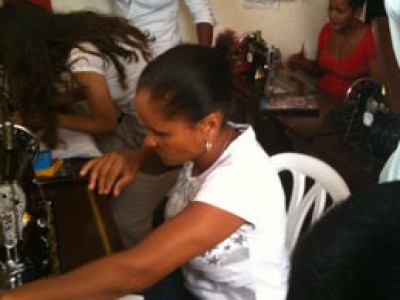
Bringing Baseball to the Batey: Rained Out
Yesterday, I made it into Batey Aleman, during a complete rainout. Tropical Depression Bonnie paid a visit and the rains haven’t ceased.
Right before going to the batey, I stopped at the Compassion Dominican Republic office and saw the 87 boxes of Rawlings and Nike equipment lining n entire wall three feet deep. I also learned quite a bit about Albert Pujols involvement in all the details of this league, including the discussions he had with Nike and Rawlings about what the team would look like.
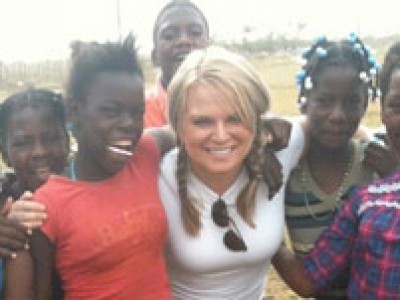
Bringing Baseball to the Batey
A batey (buh-TAY) is a sugar plantation in the Dominican that mostly uses the labor of Haitians. Most bateys are defunct, but in some case the Haitians have been permitted to stay on the land, living in slums with little clean water or any means of support.
Life in Haiti After the Earthquake: A Changed Perspective
Received from Ken Laura, a member of our Haiti Relief Team working in Port-au-Prince.
Sunday, April 25 — I moved last week and it has changed my situation and my perspective. Instead of sleeping in a tent beside the main road of Delmas listening to trucks roar up and down the street all night, I go to sleep seeing stars, and awaken to bird calls. Some of the birds are roosters, which start crowing at about 4:30, but other than that it is amazingly quiet here.
Whenever the power is out, usually from the morning until 10 p.m. there are very few lights in the area. Although the houses are a million dollars in size, they are only about $100,000 complete.
People do have mortgages here, but many build with the cash that they save from year to year and pay as they go. They don’t owe the bank interest, but they also have to wait a really long time to move into the house.
My new home is at the top of a steep hill in a very nice subdivision with a guard and pavement, mostly maintained. Some friends I’ve met are letting me stay as a courtesy.
Life in Haiti After the Earthquake: Weary but Resilient
This was written earlier in the week by Ken Laura, a member of our Haiti Relief Team. He has been in Port-au-Prince working with our Haitian staff since shortly after the earthquake.
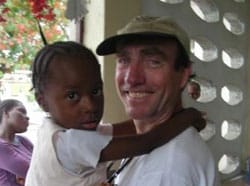 Five-thirty comes early most days, but especially on a Sunday morning when you hope to get some extra sleep before church. Not this week, however. I was wide awake at 5. I forced myself to stay in the sack for another 30 minutes despite the rooster’s consistent crowing.
Five-thirty comes early most days, but especially on a Sunday morning when you hope to get some extra sleep before church. Not this week, however. I was wide awake at 5. I forced myself to stay in the sack for another 30 minutes despite the rooster’s consistent crowing.
The high-pitched chirp of some baby doves asking for food and the soft cooing of their parents as they brought another tasty morsel to them brought back memories of 30 years ago when I was living in Limbe’ at the hospital where I worked. One of the other missionaries at that time was raising a pair of turtle doves for the eggs.
Calling my tent a sack is an exaggeration of for what I’ve been sleeping in the last three months. My tent living is nothing like what the vast majority of Port-au-Prince residents are living in at the moment.
As you’ve no doubt seen on the news, tent cities are all over town. More than 300 camps are registered in the city and more than 19 of them have 5,000-plus people living in them. The families are crammed together in muddy lots with only a sheet between them and the next family. Privacy is not a word in their vocabulary right now.
An Oasis of Talent in the Mire of Mathare Valley
The Saturday program at Mathare Community Outreach begins by focusing on the spiritual development of the children. It starts with devotions and worship and is followed by 30 minutes of small group Bible study.
For the children who have accepted Christ as their Savior, the center staff conduct a discipleship class which occurs during the Bible study.
In addition to the spiritual development of the children, the center has programs to address the physical, social and economic needs of the children.
The key factor in creating a stable economic future for the children is education; education is the key.
But beyond focusing on excellence in school, the center staff help identify and develop the talents of the children, musically and artistically, so they have even greater opportunities to succeed.
The center has a cooking program, choir and music program and drama team and works with the children to develop their public speaking abilities.
Here’s a sample of what the kids are producing.
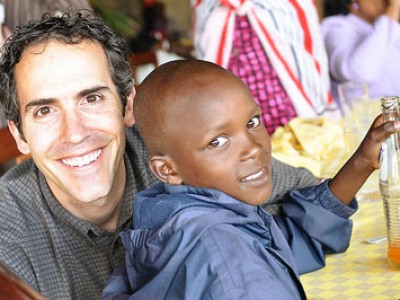
Being a Sponsor is Not Easy
Dreams are made with sweat and discomfort, effort and uncertainty and moments of success and failure. They’re kneaded together with sacrifice and generosity and held together with drive, perseverance and surrender.
Relationships are like that too. And so is sponsorship.
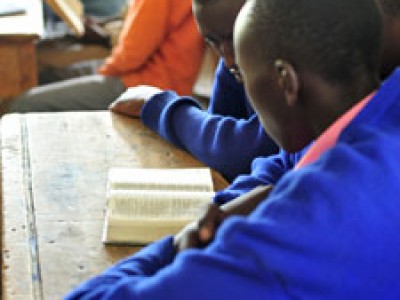
What Does My Sponsored Child Learn at the Child Development Center?
By attending classes at his or her child development center your sponsored child receives age-appropriate instruction in four main areas: spiritual, cognitive, physical and socio-emotional.
At KE-630, Good Shepard Isinya Student Center, all the children begin their Saturday at 9 a.m. with spiritual learning.
I Met An Orphan Today
What follows is an excerpt from a blog post we recommend you read. It’ll move you.
We sampled the post selectively. There’s emotional stuff in between the samples. Promise.
I met an orphan today.
I don’t think I’ll ever forget her face.
. . .
I sat down on a bench and she scooted towards me. “What is your name?”
In perfect English, “My name is Susan. I am 12.”
She looked at me. I mean, really, looked into my eyes with a question in hers and then she blurted out, “Can I touch your hair?”
. . .
She tried braiding my hair and after a few minutes she gave up saying, “I think something is wrong with your hair. I can’t braid it.” Oh Susan, you are a wise one.
. . .
Again, her eyes found mine and she questioned, “Can I touch your skin? It is so white.”
This time I could only nod as she gently touched my arms and then my legs peeking out from my cropped pants.
“You are the first white woman I have touched,” she said in an almost hushed voice.
Read all of Kristen Welch’s post at We Are THAT Family.
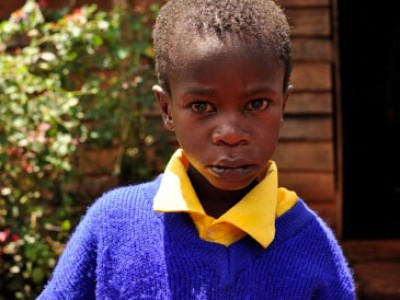
Confessing to Something That Probably Means I’m Human
The poverty in my life is emotional and spiritual. The poverty in the lives of the kids you sponsor and the kids we’re meeting here in Kenya is that and more.
Tending a Kitchen Garden: Lessons From a Child Survival Program Mom
What does a kitchen garden have to do with increasing the chance a child lives to see age five?
Kitchen gardens are a part of the “empowerment training” that moms and caregivers receive at the Kawangware Child Survival Program (KEC28), and Caroline is a mom who is benefiting from this training.
Outside of her 10′ x 10′ home, Caroline maintains a kitchen garden, something she learned to do in the Child Survival Program.
The garden provides food for her six-member family and requires tending to make sure bugs don’t destroy the vegetables, along with the hope she and her husband have for something more. When we ended our home visit with Caroline and her family yesterday,
“her husband proudly told us that his wife was working hard and that together they were changing their situation. He thanked us for coming to visit their house that they lived in “for now.” He said “for now” because he told us that he knew that they wouldn’t be there forever. The tools they had and the skills they learned were helping them break free from the poverty that surrounded them.”
Read more of Caroline’s story on Brad Ruggles blog – Learning How to Live.
Support a Child Survival Program for $20 a month and you can help empower moms like Caroline.
Empowering Moms With Charcoal Dust and Dirt
One of the ways that the Child Survival Program empowers mothers is by offering literacy and economic training to help them better provide for their families. 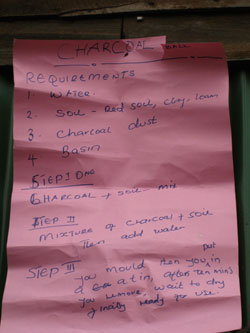
Jackline is a mom at the Kawangware Child Survival Program which is part of the Kawangare Child Development Center.
The economic training she received taught her to make charcoal from charcoal dust and dirt and then use the charcoal to roast corn to sell on the side of the road.
Roasting the corn allows Jackline to make about $1 a day to feed her two children, including 14-month old Flavian.
We visited the Kawangware Child Survival Program today, met Jackline and watched her demonstrate the skill that helps her provide for her children.
We also met Caroline, another mom in the program. She was excited to show us the income generating activity she was taught. You can read Caroline’s story on Brad Ruggles blog – Learning How to Live.
Support a Child Survival Program for $20 a month and you can help empower moms like Jackline and Caroline.

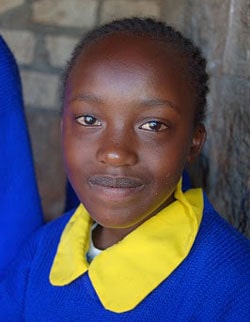 I don’t think I’ll ever forget her face.
I don’t think I’ll ever forget her face.
